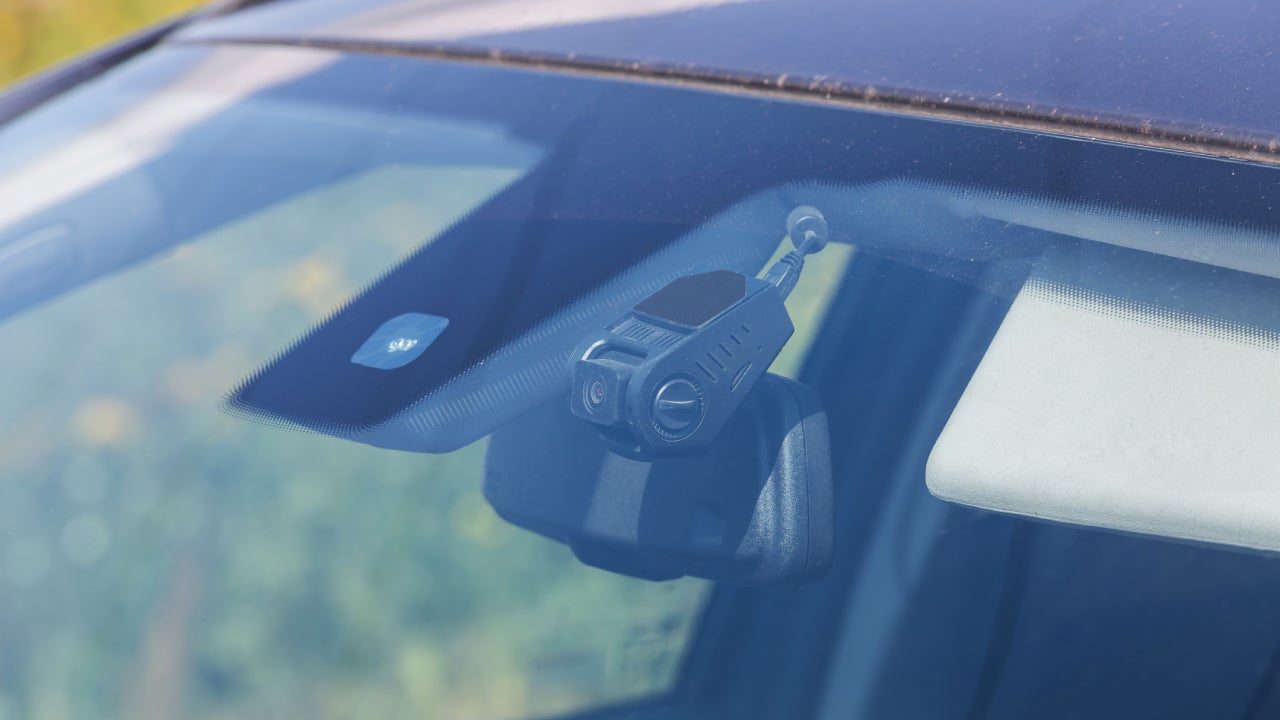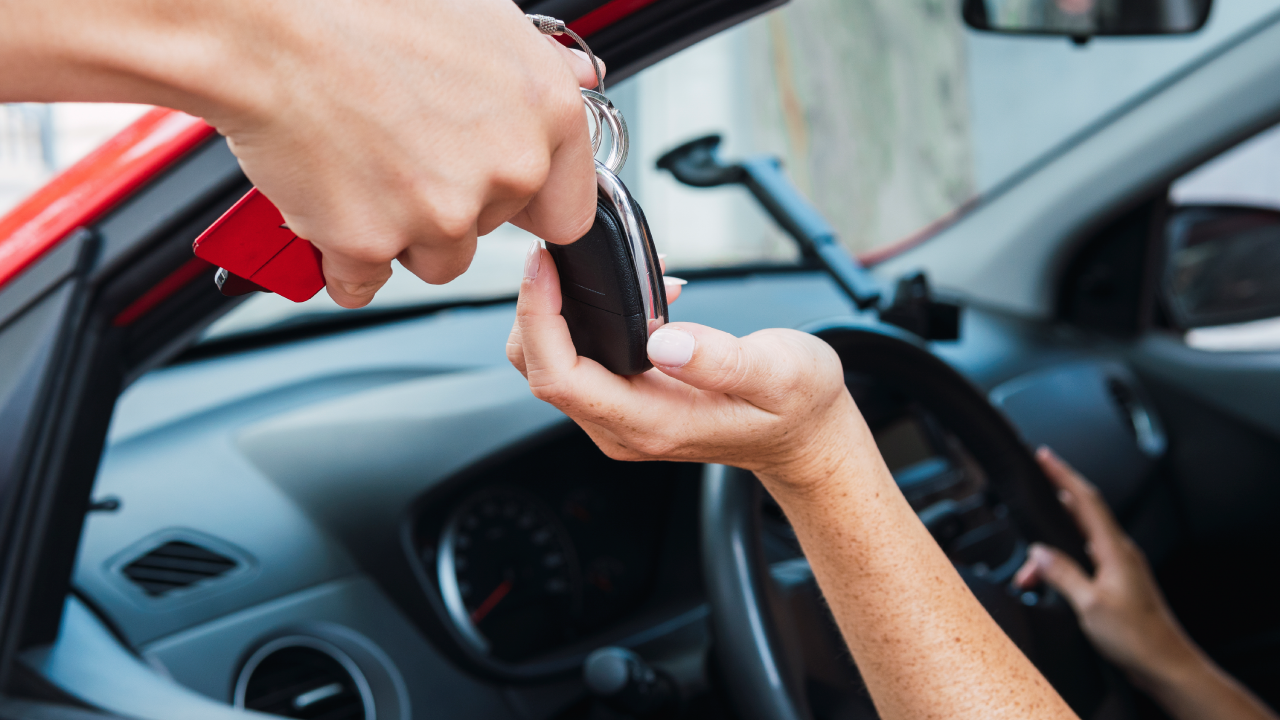Your car’s safety tech could lower the risk of accidents but raise the cost of claims

Most modern cars come equipped with advanced safety technology. Features like lane departure warnings, forward collision mitigation and blind spot detection are becoming standard, and automakers have even committed to making automated emergency braking an essential component of all new cars by 2029.
From a safety perspective, this is all great news. After all, research shows that advanced driver assistance systems (ADAS) can reduce crash risk by as much as 50 percent.
But all the technology making your car safer also makes it more expensive to repair — which could mean larger, more drawn-out insurance claims. With claims industry experts pointing to vehicle complexity as a factor behind rising insurance rates, it’s important to understand how the technology in your vehicle — or one that you plan to buy — could impact the cost of coverage.
To better understand the relationship between ADAS and auto insurance rates, Bankrate spoke to experts in the auto safety and insurance industries. We found that while ADAS likely raises insurance costs for some drivers, there’s still time to reverse the trend without sacrificing safety improvements.
What is ADAS?
ADAS — advanced driver assistance systems — are systems that assist drivers in operating a vehicle with the goal of reducing human error through human-machine interaction. Examples of safety system ADAS you may have in your vehicle include:
- Forward collision warnings
- Automated emergency braking
- Lane departure warnings or prevention
- Parking sensors
- Blind spot monitoring
Many of these systems are standard or widely available as optional equipment on most new vehicles sold in the U.S. By 2029, automated front emergency braking will be standard equipment required for all new vehicles.
Keep in mind: Driver assistance isn’t the same as full automation. Advanced crash avoidance systems don’t replace human drivers; instead, they provide assistance in the form of warnings or automated braking or steering in specific circumstances.
Are ADAS systems making insurance more expensive?
Advanced safety tech makes driving safer, but it also makes cars more expensive to repair. With the cost of car insurance on the rise in the past few years, anything that adds to insurers’ losses could raise your premium.
We spoke to two experts — Tony Cotto, Director of Auto and Underwriting Policy at the National Association of Mutual Insurance Companies (NAMIC) and Jessica Cicchino, senior vice president for research at the Insurance Institute for Highway Safety (IIHS) — about the costs and benefits of ADAS for insurance companies and their customers.
ADAS may raise the cost of insurance claims
In order to reduce accidents, ADAS requires a huge investment in technology for both vehicle manufacturers and repair shops — an investment that may be passed on to insurers in the form of bigger claims.
Tony Cotto explains it like this: The cameras and sensors that ADAS relies on are typically located on the outside of the vehicle. As a result, these delicate components are more likely to be damaged in the event of an accident — and when it comes to post-collision repair, cameras and sensors require extra work.
“You can’t just replace the camera,” Cotto explains. “You have to calibrate it. In order to calibrate it correctly, the mechanic has to spend additional time on that repair and the calibration, and they may need additional equipment, which shops have to invest in.”
All of these costs — components, labor, equipment and the time required to make the necessary repairs and calibration — add up when it comes time to file a claim. A recent study by the American Automobile Association (AAA) found that ADAS repairs represent 37.6 percent, on average, of the total cost of repairs in four common collision scenarios. For a minor rear collision repair, AAA estimates that ADAS accounts for 40.9 percent of the total cost of repairs.
It gets even more complicated, Cotto says. The calibration imperative raises the cost of auto repairs, but it can also raise risk if it’s not completed correctly. Improper calibration could cause ADAS features to malfunction, leading to a higher risk of future accidents.
The cost to repair and replace components is up; the cost to insure them is going to follow.— Tony Cotto, Director of Auto and Underwriting policy, National Association of Mutual Insurance Companies (NAMIC)
ADAS may reduce the number of small claims
In the event of a crash, the presence of ADAS features can raise the overall cost of repairs. But it’s important to remember that this technology exists to reduce crashes — and the data shows that it’s pretty good at that job.
In April 2023, a study by the Highway Loss Data Institute (HDLI) found that certain collision avoidance systems bring down insurance claim frequency by as much as 28 percent:
| Collision avoidance system | Property damage liability claims | Collision claims | Bodily injury claims | MedPay claims | Personal injury protection (PIP) claims |
|---|---|---|---|---|---|
| Forward collision warning (FCW) | -9% | -3.1% | -17.3% | -19.8% | -10.2% |
| Front automatic emergency brain (AEB) | -14.4% | -3.0% | -23.6% | -4.2% | -4.0% |
| Curve-adaptive headlights | -5.2% | -1.4% | -6.7% | -6.2% | -4.6% |
| Lane departure warnings (LDW) | -0.2%* | -0.3%* | +6.2% | -0.8%* | -5.2%* |
| Blind spot warning (BSW) | -7.1% | -2.1% | -8.2% | -8.0% | -6.3% |
| Parking sensors | -5.4% | -0.8% | -1.1%* | -5.5% | -4.5% |
| Rear camera | -4.4% | +0.7% | -2.9% | -5.0% | -4.4% |
| Rear automatic emergency braking (AEB) | -28.8% | -8.7% | -10% | +0.5%* | +0.7%* |
| * Findings are not statistically significant. |
Automatic emergency braking (AEB) — now a required technology for new cars — is particularly effective at reducing crashes. What that means, Cicchino says, is a reduction in smaller claims that are both common and fairly inexpensive.
“We’re seeing AEB, especially, really brings down rear-end crashes,” Cicchino says, “and some of those are the lower-dollar-value claims.” Bringing down the frequency of small claims may result in a higher average cost per claim for remaining claims, but it means a reduction in overall insurance losses for insurers — which is good news for your premiums.
Across the board, insurers are paying out less money on claims for vehicles with [AEB] systems because the reduction in crashes is outweighing the increase in the cost.— Jessica Cicchino, Senior vice president for research, Insurance Institute for Highway Safety (IIHS)
Overall, Cotto and Cicchino say, the future of ADAS is promising — but vehicle owners may still face steep costs if their car is damaged.
Both experts agree that increased adoption of advanced safety systems by drivers may help to maximize the gains and minimize the losses associated with this technology. According to a recent study by IIHS, approximately 9 in 10 drivers with lane departure warning and prevention systems now keep them on — up from just 51 percent eight years ago. Keeping the system on means it’s able to do its job and reduce accidents. It also means drivers who do get into crashes aren’t paying extra to repair a system they didn’t even use.
That said, there’s still work to be done to make sure that the cost of ADAS doesn’t outweigh its benefits.
“We have to reduce the cost of the crashes,” Cotto says. “That’s where everyone wants to get. You can do that by reducing the cost of technology, which in turn means reducing the cost of repair. If we train more auto mechanics in this country, that would bring down the cost of repair.”
While most automakers are still focused on optimizing lower-level advanced safety tech like forward collision mitigation and lane departure prevention, full automation is a topic that gets a lot of buzz in automotive circles.
Because this technology is still in its earliest stages, there’s no clear picture of how it could impact road safety or insurance claims, according to Cicchino.
“In general, for consumers, crash avoidance systems that are there to prevent crashes are working,” she says. “Seek them out when looking for a new vehicle.” But “when it comes to automation systems that do more of the driving for you, the jury is still out.”
Do insurers offer discounts for safety equipment?
Many auto insurance companies offer safety equipment discounts — but you might not get a direct discount based on your vehicle’s ADAS technology.
Every insurance company has a different approach to pricing. While all auto insurers will offer different rates based on your car’s make and model, there’s a lot of variation in how granular insurers get when looking at your vehicle. Some insurers may offer lower premiums to drivers who opt for this technology, but others may only consider the model’s overall safety record based on crash rates and claim frequency.
When it comes to direct auto insurance discounts for safety tech, you’ll often see discounts offered for less advanced equipment. For example, Geico offers discounts for vehicles with airbags, daytime running lights and anti-lock brakes, but doesn’t advertise a discount for cars with advanced driver assistance systems like forward collision mitigation or lane departure warnings.
If you’re worried about missing out on a discount for your vehicle’s safety tech, Cotto recommends working with an insurance agent: “A good agent will say, ‘Let’s make sure we highlight all the safety features to get you the best rate.’”
3 ways to keep your insurance rates low with ADAS
Advanced vehicle safety tech may be bringing losses down for insurers overall, but individual vehicle owners may still see steeper costs in the event of an accident. If you’re used to the cost of insurance and repairs for an older vehicle with less tech, the added cost of ADAS could be a shock — and a source of stress.
But it may not have to be. The strategies below may help you maximize the benefits and lower the long-term cost of having ADAS in your vehicle:
- Get to know your vehicle’s safety systems: Adoption is key to making ADAS work for consumers — but if you’re not familiar with these systems, it can be hard to know what those lights and buttons actually mean. If you’re not sure how your vehicle’s ADAS features work, take some time with your owner’s manual and make sure that your safety tech is turned on and in working order.
- Work with a mechanic you trust: In the event of a crash, it’s important to ensure that your vehicle’s ADAS features are repaired correctly. Bring your vehicle to a shop you know and trust to make sure that you’re getting the right repairs and calibration at a fair price.
- Shop with an agent: Not all insurers offer the same discounts for safety equipment, so you may want to work with an agent or broker to maximize your discount potential if you’ve got a car with advanced safety tech.
Why we ask for feedback Your feedback helps us improve our content and services. It takes less than a minute to complete.
Your responses are anonymous and will only be used for improving our website.
You may also like

How dash cameras impact your car insurance





